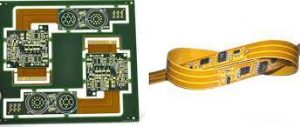Can Flex PCBs Be Used in 3D Printing Applications?
Flex PCBs Be Used in 3D Printing
In the modern era of electronic devices, mobile phones, MP3 players and more, most electronics have become smaller and lighter. A new technology called flex PCBs has enabled this trend to continue with products that are flexible, durable and easier to assembly.
Flex PCBs are multi-layer printed circuit boards that have both conductive and non-conductive layers. They can be used in a variety of applications, including electronic displays and medical equipment. They can also be molded into three-dimensional shapes to suit unique requirements. This has enabled innovative designs like heads-up displays for aerospace pilots and minuscule devices such as hearing aids that can be worn directly on the body.
A flex pcb board has a thin copper-clad base that is laminated with various materials and plated with gold or silver to create the circuit patterns. These can be etched using standard etching solutions such as ferric chloride to create the circuit pathways and connections. The thickness of the flex board can vary, but is usually in the range of 1 mm to 3 mm.
PI or PET films, as well as thin flexible epoxy-and-glass fiber substrates are commonly used as the basis for flex circuits. These can be coated with coverlay to insulate the outer surface conductors and protect them from corrosion. This material is similar to the solder mask used on rigid PCBs, although a bit thicker.

Can Flex PCBs Be Used in 3D Printing Applications?
The copper layer in a flex PCB is typically annealed to improve its durability and allow it to bend more easily. The copper foil is also often bonded to the underlying layers with an adhesive to prevent it from peeling off during assembly. The boards can be assembled with either through-hole or surface mount components. Both types have their advantages and disadvantages, but through-hole is more popular.
One of the main disadvantages of a flex circuit board is that it may not be suitable for all applications due to its flexibility. Large, heavy components can strain the flex substrate and reduce reliability. Additionally, a traditional soldering process might not be possible with a flex board, and specialized connectors and techniques are needed. These issues can drive up the assembly and maintenance costs of a product.
It’s important for a designer to understand the different types of flex boards and their capabilities before starting to design them. Flex boards come in several different classes, which are determined by the level of inspection, testing and performance required for a final product. For example, a military-grade flex circuit board has strict specifications and is made of special materials to ensure it can be repaired and replaced when damaged.
The most expensive flex boards are designed for use in critical devices that need to perform when required. These include life support items and flight control systems. The flex boards in these devices must be able to function without interruption, even under extreme conditions. This requires the highest levels of inspection and testing, which can be costly to produce.